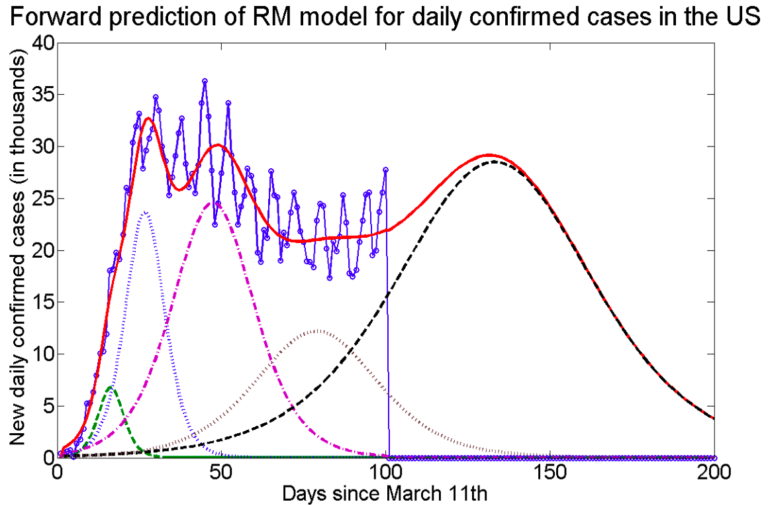There are currently intensified efforts by the scientific community world-wide to analyze the dynamics of the Covid-19 pandemic in order to predict key epidemiological effects and assist the proper planning for its clinical management, as well as guide sociopolitical decision-making regarding proper mitigation measures. Most efforts follow variants of the established SIR methodological framework that divides a population into Susceptible, Infectious and Recovered/Removed fractions and defines their dynamic inter-relationships with first-order differential equations. This paper proposes a novel approach based on data-guided detection and concatenation of infection waves each of them described by a Riccati equation with adaptively estimated parameters. This approach was applied to Covid-19 daily time-series data of US confirmed cases, resulting in the decomposition of the epidemic time-course into five Riccati modules representing major infection waves to date (June 18th). Four waves have passed the time-point of peak infection rate, with the fifth expected to peak on July 20th. The obtained parameter estimates indicate gradual reduction of infectivity rate, although the latest wave is expected to be the largest. This analysis suggests that, if no new waves of infection emerge, the Covid-19 epidemic will be controlled in the US (< 5000 new daily cases) by September 26th, and the maximum of confirmed cases will reach 4,160,000. Importantly, this approach can be used to detect (via rigorous statistical methods) the emergence of possible new waves of infections in the future. Analysis of data from individual states or countries may quantify the distinct effects of different mitigation measures.

